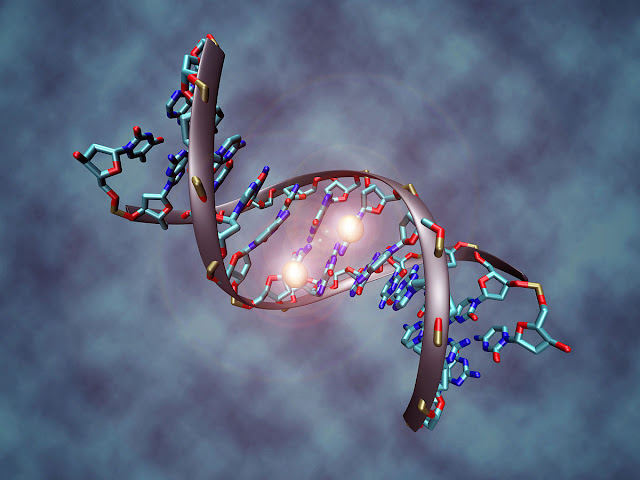PARP Inhibitor Biomarkers Market to See Significant Surge in Adoption Owing to Increasing Investment in Precision Medicine
Poly (ADP-ribose) polymerase (PARP) inhibitors are a class of cancer chemotherapy drugs. PARP inhibitor biomarkers are used to detect which cancer patients are most likely to respond to PARP inhibitor therapy. They play a vital role in guiding precision cancer treatment as they help target PARP inhibitors to patients with homologous recombination deficiency (HRD).
Key Takeaways
Key players operating in The PARP Inhibitor Biomarkers Market are Myriad Genetics, Inc., F. Hoffmann-La Roche Ltd., NeoGenomics Laboratories, Inc., and others. Myriad Genetics, Inc. is one of the leading providers of PARP inhibitor biomarkers testing solutions.
The key player is actively focusing on expanding their product portfolio in PARP testing to cater to the growing demand from oncologists. There is increasing adoption of PARP inhibitor biomarkers testing for ovarian and breast cancer to provide personalized treatment options to patients.
Technological advancements such as next-generation sequencing (NGS) have enabled comprehensive genomic profiling and multi-gene panels for PARP testing. NGS-based PARP testing provides accurate and timely cancer gene mutation detection to guide PARP inhibitor therapy.
Market Trends
The increasing understanding of PARP inhibitor's mechanism of action is driving research on developing new PARP inhibitor drugs for various cancer types. Several pharmaceutical companies are investing in developing pan-PARP inhibitor drugs with broader anti-tumor activity.
Combination therapy using PARP inhibitors with other cancer drugs is emerging as a promising treatment strategy. Ongoing clinical trials are evaluating the efficacy of PARP inhibitors in combination with immune checkpoint inhibitors, chemotherapy, and radiotherapy.
Market Opportunities
Increasing research collaboration between diagnostics companies and drug makers presents significant opportunities. Companion diagnostics to match patients to specific PARP inhibitors will define the future market.
Early cancer detection plays a major role in improving cancer treatment outcomes. Leveraging PARP inhibitor biomarkers for non-invasive cancer screening and detection presents an opportunity.
Impact of COVID-19 on PARP Inhibitor Biomarkers Market Growth
The COVID-19 pandemic has significantly impacted the PARP inhibitor biomarkers market. Due to lockdowns imposed worldwide to control the virus spread, research activities were disrupted. Clinical trials and new product developments were delayed in 2020. Supply chain disturbances led to non-availability of key research consumables and instruments. Resources and funds were diverted from cancer research to COVID-19 therapeutics development. Cancer screening programs and diagnostic procedures were postponed to avoid virus exposure in hospitals and clinics. All these factors contributed to a decline in PARP inhibitor biomarkers market growth in the initial period of the pandemic.
However, the impact was not long-lasting as research gradually resumed in 2021 with strict safety protocols. Government and private funding poured in for accelerating biomarker development to aid cancer care. Market players focused on strategic collaborations and virtual interactions to sustain product pipelines. Regulatory clearances were prioritized for essential biomarkers. Telehealth and home healthcare witnessed increased adoption to serve cancer patients, reducing treatment delays. Biomarker analysis from stored samples aided retrospective clinical studies. The market is now expected to bounce back strongly driven by the ongoing need for cancer screening, precision diagnosis and targeted therapies.
Geographical Regions with Highest PARP Inhibitor Biomarkers Market Value
North America dominates the global PARP inhibitor biomarkers market in terms of value. Advanced research infrastructure, presence of leading market players, rising cancer burden and favorable reimbursements have boosted biomarker adoption in the region. Growing clinical trials exploring new applications is further propelling the North American market. Europe is the second largest regional market owing to significant government and private funding for precision oncology research. Asia Pacific is anticipated to be the fastest growing market during the forecast period due to improving healthcare access, increasing research initiatives and expansion of biopharmaceutical companies in the region.
Fastest Growing Regional Market for PARP Inhibitor Biomarkers
The Asia Pacific region is expected to exhibit the highest growth in the PARP inhibitor biomarkers market during the forecast period. This is attributed to rising healthcare expenditures, growing cancer incidence, increasing awareness about precision medicine and expanding biotechnology sector in emerging countries. large patient pools in China and India present lucrative opportunities. Governments are supporting biomarker discovery through special funding programs. Leading global players are establishing manufacturing and R&D facilities in the region to cater growing demand. Furthermore, diagnostic guidelines are harmonizing with the developed world. All these factors are fueling heavier adoption of PARP inhibitor biomarkers across Asia Pacific clinical settings and research organizations.



Comments
Post a Comment